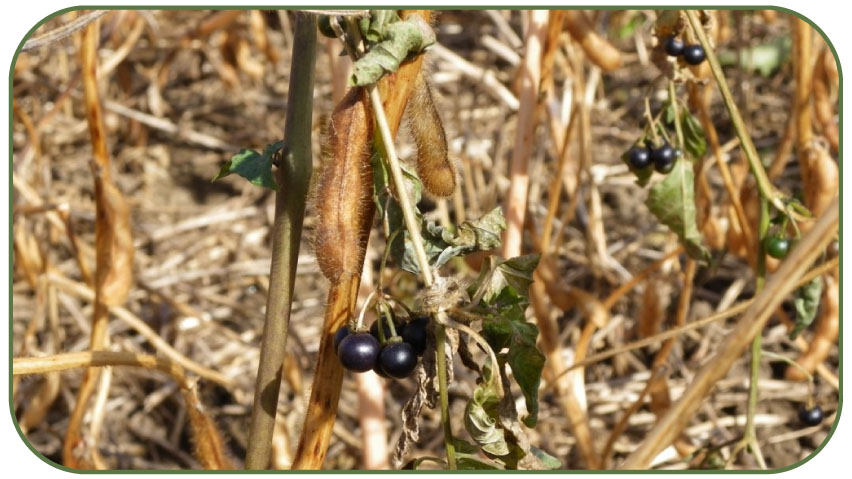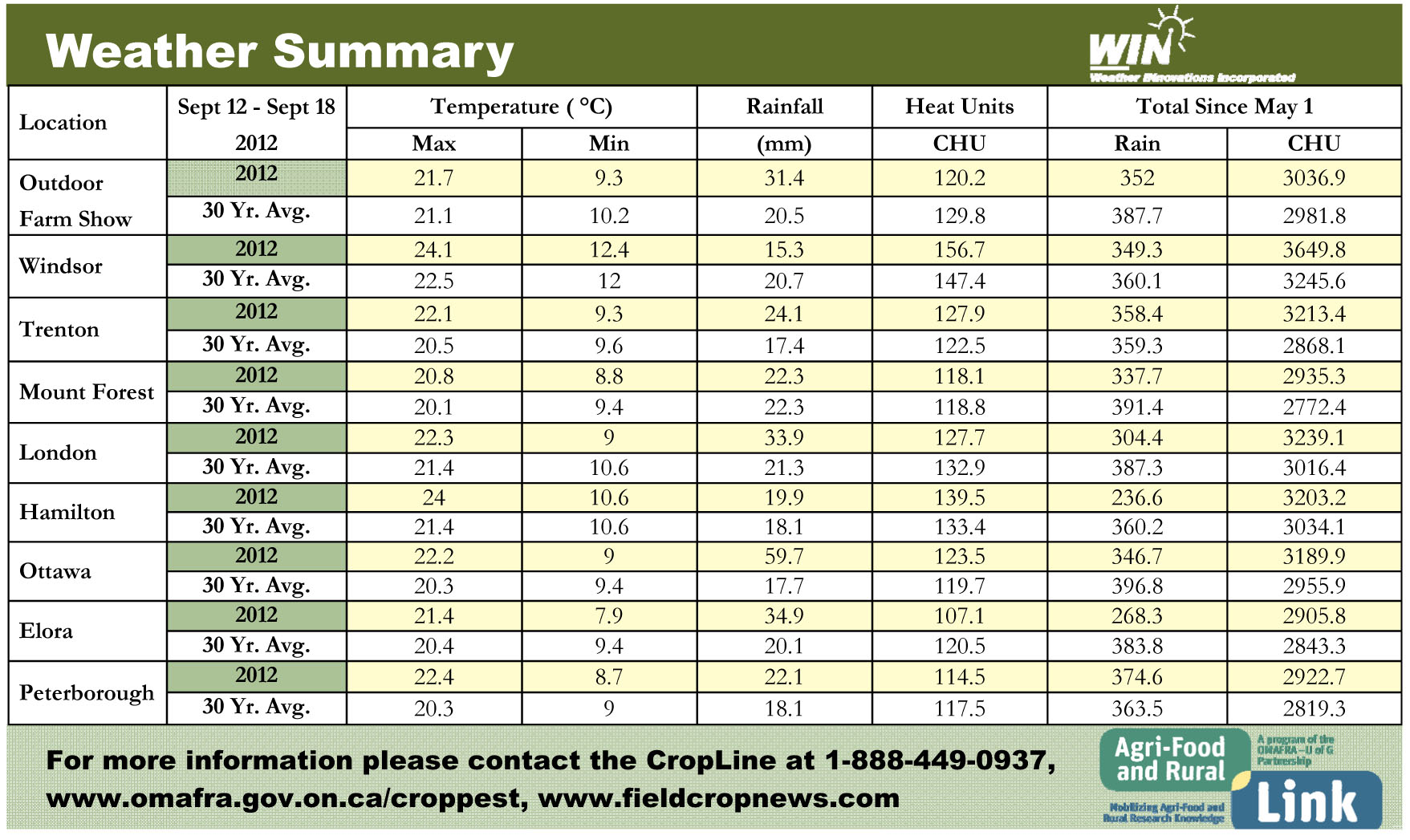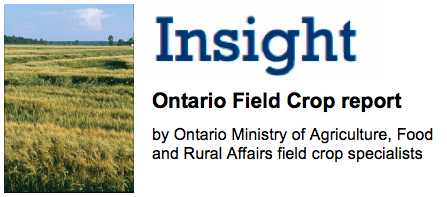Soybeans: Horst Bohner
Soybean harvest has begun in most areas. Yields have generally been better than expected. Most yields reported so far have ranged from 35 to 45 bu/ac. Those areas that received timely rains are seeing excellent yields ranging from 50 to 60 bu/ac. Areas that were extremely dry this summer have yielded as low as 20 bu/ac. Fields are now maturing rapidly and harvest is expected to begin in earnest over the next two weeks if weather permits. Green seed has been an issue in the very earliest harvested fields, even though seed moisture was as low as 11%. This has caused the loss of some IP premiums. Most of the green seed appears to be immature seed which will turn yellow to some extent if harvest is delayed. Some varieties have more green seed than others. If the green seed is dry and completely mature it will not turn colour if harvest is delayed and will not decline significantly in storage. Although some green is present in many samples on the whole green seed does not appear to be a major concern for the provincial harvest. Soybean harvest is off to a good start.
 Weeds: Mike Cowbrough
Weeds: Mike Cowbrough
Do you have unexplainable weed escapes? Find out whether they are herbicide resistant.
Prior to harvest collect some seed from random plants, put it in a paper bag and send
it to the University of Guelph Weeds Lab c/o Pete Smith Crop Science Building, N1G 2W1. Provide your contact information and what herbicides you would like tested. More
information on how to submit a sample can be found at: http://www.plant.uoguelph.ca/resistant-weeds/services/
Corn: Greg Stewart
Most of the corn across the province has reached, or is close to, black layer which indicates physiological maturity. This generally occurs with grain moisture content at approximately 32%. In some areas grain moistures may move down quickly. Growers wanting to store corn as high moisture grain should be attentive to grain moisture. Minimum grain moisture contents are 21-23% for successful fermentation and storage in a properly sealed silo (oxygen limiting -concrete or steel) without any special precautions. With open top or bunker silos, storage and proper fermentation is difficult when grain moisture is under 23%.
Fields should be scouted for stalk quality and potential cob drop to prioritize harvesting. In addition, pay attention to kernel damage from insects, birds or kernel splitting that might predispose them to ear moulds.
Edible Beans: Brian Hall
Dry weather has allowed for good progress with harvest. Estimates for harvested acreage are at 40 to 50% for white, black and otebo beans, 70-80% for cranberry beans and just starting for adzuki and kidney bean. Yields for all types have generally been better than expected and have varied widely from 8 to over 30 cwt/ac. Quality has been good and meeting market specifications in most cases. Expect field dry down following glyphosate to take longer than the typical 10-14 days with cooler temperatures, cloudy conditions. Excellent plant coverage is critical with glyphosate plus AIM herbicide treatment.
Seed moisture content and seed coat damage should be monitored throughout the day, and adjustments made to combine operations. Seed damage can increase significantly when moisture levels are below 16%. Ensure that trucks and handling equipment are clean of other crops including corn or soybeans. Contamination with corn or soybeans could result in load rejection due to assumption that contaminates are genetically enhanced.
Cereals: Peter Johnson / Scott Banks
Wheat drills are chasing combines out of the field across the province. Planting intentions are big, driven by high prices for the 2013 crop and excellent yields from the 2012 crop. Final yields put the 2012 crop at 81.6 bu/ac, slightly above the trend line of 81.3, despite very challenging weather. Additionally, wheat is the only crop that producers can forward contract 2013 production at 2012 prices. Both corn and soybeans have large discounts to 2013 production. Plant wheat, and lock in a portion of anticipated production at these high prices.
Quick notes: apply a high phosphorus starter fertilizer with the seed (MAP is as good as MESZ or liquid starters, potash adds very little), seed 2.5 - 3.25 cm (1 to 1.25 in) deep, do fall weed control, do not apply nitrogen or sulphur in the fall, increase seeding rates as planting dates move later (~100,000 seeds/ac for every 5 days).




